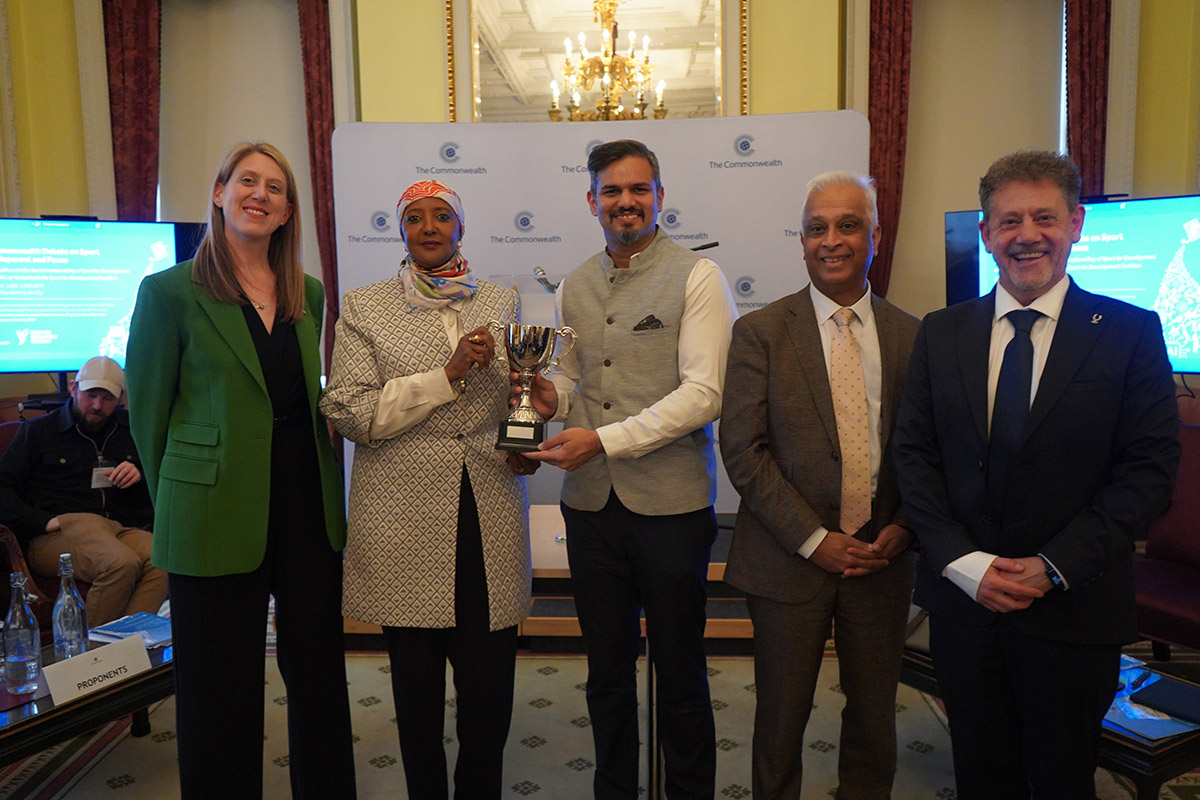“It is the choice of the parties involved”
December 12th, 2018 A marriage or civil union is usually entered into by two people but Bernard Lim, 25, a Commonwealth Correspondent from Singapore argues that it should be the right of citizens to enter marital arrangements of their choice, whether their unions are monogamous or not.
A marriage or civil union is usually entered into by two people but Bernard Lim, 25, a Commonwealth Correspondent from Singapore argues that it should be the right of citizens to enter marital arrangements of their choice, whether their unions are monogamous or not.
Many people have taken for granted that monogamy should govern every form of marriage or civil union. We talk about the “sanctity” of marriage, where in the name of God, X takes Y to be his lawfully wedded husband or wife. One man to one wife. However, personally I do not believe that it is “natural” or “right” that there is a single, immutable manner in which marriage should be organized. Sometimes, families can have one man and two women, or two men and one woman. After the passing of many laws around the world that permits homosexuals to lawfully wed in a “marriage”, the word has lost its exclusivity for heterosexual couples. Personally, it is my belief that humans choose for themselves which marital organization they want, because it affects their emotional happiness, as long as no one is harmed. One man, many women…. Or many men, one woman? It is a choice between all parties involved.
One might think that religious conservatism would traditionally be opposed to any newfangled social phenomenon like husband-sharing or wife-sharing, but the evidence tells otherwise! Islam, for example, allows the marriage of a maximum of four women to one man, but subject to restrictions and imperatives, like the obligation to provide for all four wives. Traditional Hindu law allowed polygamy if the first wife could not produce a son, until the secular government of India passed the Hindu Marriage Act of 1955.
Most non-monogamous marriages contain men who have multiple wives, but what about women who have multiple husbands, or polyandry? This was not unheard of in the past: for example, Draupadi, a queen in the historical Indian epic Mahabharata, has five husbands. According to anthropologist Stephen Beckermann, in matrilineal Trobriand Islander families, women are allowed to take as many sexual partners as they like and change spouses anytime. In Sri Lanka, polyandry was legal until banned by the British in 1859, as the British colonized the island.
Indeed, history has seen many diverse forms of marriage in the past. At present, many interesting cases of unconventional marriages and partnerships have appeared in society. In 2017, there was a case of two bisexual men, who welcomed a woman into their married relationship, calling themselves a “thruple”. Even in the U.S. state of Utah, where polygamous marriages were banned, a 2013 reality television series called “My Five Wives” depicted a polygamist family of a man, his five wives, and their 25 children living together happily. A major drawback, however, is that the grocery bill came to US$4000 every month. What about outside of the USA? At present, fraternal polyandry is permitted in Sri Lanka under the Kandyan Marriage Law, and polyandry is still practiced in Tibet, albeit to a lesser extent than the past.
Women are gaining in earning power, in rights, in political power across the world, from the USA to Singapore. Both men and women have the same rights to choose (increasingly in many countries) to work or become a homemaker at home, to abort a baby, to negotiate couple duties. Should there be a single, immutable form of marriage where one man is married to one woman? What do you think?
…………………………………………………………………………………………………………………
About me:
I have been a community advocate since age 12. I also have extensive experience in human rights and youth participation, having represented Singapore at global conferences. As a Youth Environment Envoy, I organized the 2015 Youth for the Environment Day as a representative of the National Environment Agency. For my efforts, I was awarded the Young Community Leader Award in 2010 and 2013, the Women Deliver Young Leader Fellowship 2016 and 6 Degrees Junior Fellowship 2017. Currently, I am studying in university and working as a wealth advisor, advising on insurance and investment.
………………………………………………………………………………………………………………
Opinions expressed in this article are those of the author and do not necessarily represent the views of the Commonwealth Youth Programme. Articles are published in a spirit of dialogue, respect and understanding. If you disagree, why not submit a response?
To learn more about becoming a Commonwealth Correspondent please visit: http://www.yourcommonwealth.org/submit-articles/commonwealthcorrespondents/
…………………………………………………………………………………………………………………




